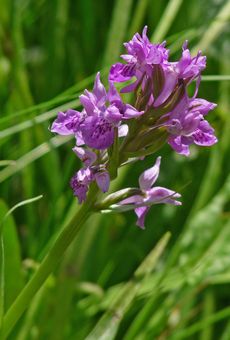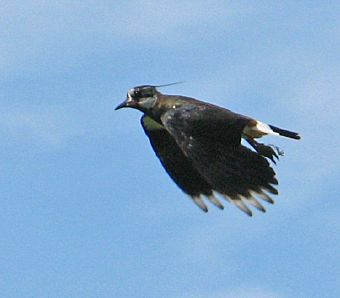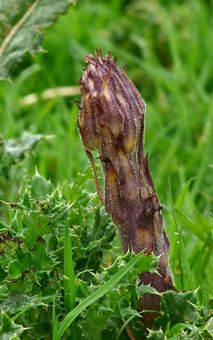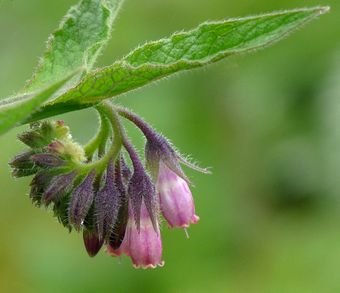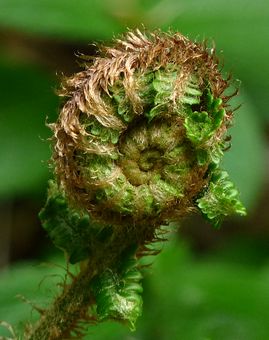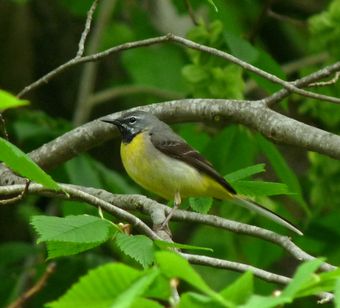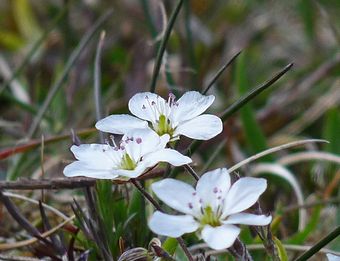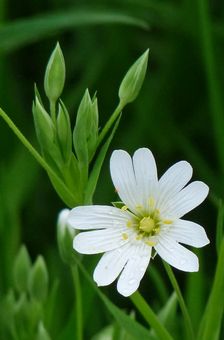WFV, Grassington-Hebden Circular, 29th June 2010
 Parent Feeding Spotted Flycatcher ChickA group of 14 were on today's trip to Grassington, which was led by Alice. On the drive to the Dales, we were closely watching the weather. There had been thunderstorms overnight, and big black clouds were looming. On arrival at our starting point at the main car park in Grassington, the weather still looked uncertain as were many of us about whether to don waterproofs. We headed down to the bridge across the Upper Linton Falls where we saw grey wagtails, chaffinch, starling and song thrush. Marsh yellow cress was seen on the rocks below, and winter cress was also found here. We continued our walk along the side of the River Wharfe. The highlight at this point was the views we had of common sandpipers and a dipper. The sun was breaking through the clouds, and the weather just continued to improve throughout the day. The scenery was beautiful. We reached the stepping stones across the river that lead to Linton church, but we didn't cross over. Several goosanders were seen perched on a rock on the river and the remains of a crayfish was found on the river bank - maybe one of the alien invader signal crayfish. A boggy area was found by the river path which kept the botanists busy for some time. Club moss, mimulus and lesser water parsnip being recorded. Whilst the botanists were botanising, the birdwatchers were enjoying their own delights having sighted a spotted flycatcher which was feeding chicks in a nearby tree. Wood warblers were also briefly seen, and a song thrush was seen going in and out of a hole in the stone wall. We stood and watched the birds here for quite some time. Soon after this we stopped for lunch on the edge of the river right opposite a sand martin bank. Again, we had views of a parent feeding a chick which was poking its head out of the nest.
Parent Feeding Spotted Flycatcher ChickA group of 14 were on today's trip to Grassington, which was led by Alice. On the drive to the Dales, we were closely watching the weather. There had been thunderstorms overnight, and big black clouds were looming. On arrival at our starting point at the main car park in Grassington, the weather still looked uncertain as were many of us about whether to don waterproofs. We headed down to the bridge across the Upper Linton Falls where we saw grey wagtails, chaffinch, starling and song thrush. Marsh yellow cress was seen on the rocks below, and winter cress was also found here. We continued our walk along the side of the River Wharfe. The highlight at this point was the views we had of common sandpipers and a dipper. The sun was breaking through the clouds, and the weather just continued to improve throughout the day. The scenery was beautiful. We reached the stepping stones across the river that lead to Linton church, but we didn't cross over. Several goosanders were seen perched on a rock on the river and the remains of a crayfish was found on the river bank - maybe one of the alien invader signal crayfish. A boggy area was found by the river path which kept the botanists busy for some time. Club moss, mimulus and lesser water parsnip being recorded. Whilst the botanists were botanising, the birdwatchers were enjoying their own delights having sighted a spotted flycatcher which was feeding chicks in a nearby tree. Wood warblers were also briefly seen, and a song thrush was seen going in and out of a hole in the stone wall. We stood and watched the birds here for quite some time. Soon after this we stopped for lunch on the edge of the river right opposite a sand martin bank. Again, we had views of a parent feeding a chick which was poking its head out of the nest. Grypocoris stysi (miridae family) In the River Wharfe we saw numerous small rainbow trout and minnow and we also saw a bullhead. Large numbers of oyster catchers were both seen and heard.We left the riverside path and followed Hebden Beck towards Hebden village. Unfortunately the little village shop was closed so ice cream was off the menu. We headed for the pub, but that was closed too!! Beyond the village we continued our walk through fields and on walled lanes. The views were wonderful and several small planes and a couple of helicopters intermittently disturbed the peace. Our route also took us through the Grasington Park Estate Meadows, a SSSI where the Grassington isolation hospital once stood. There was an abundance of wild flowers including greater burnet and common spotted orchid, but the highlight here was a vast swathe of melancholy thistle interspersed with other wild flowers. 33 birds and 141 flowering plants/ferns were recorded. Four butterflies were sighted including common blue, small tortoiseshell and red admiral. We passed through Grassington vilaage and eagerly headed for the information centre at the car park, once more anticipating ice creams, but they didn't sell any! In spite of being denied our ice cream treats, we had enjoyed a fantastic day out.
Grypocoris stysi (miridae family) In the River Wharfe we saw numerous small rainbow trout and minnow and we also saw a bullhead. Large numbers of oyster catchers were both seen and heard.We left the riverside path and followed Hebden Beck towards Hebden village. Unfortunately the little village shop was closed so ice cream was off the menu. We headed for the pub, but that was closed too!! Beyond the village we continued our walk through fields and on walled lanes. The views were wonderful and several small planes and a couple of helicopters intermittently disturbed the peace. Our route also took us through the Grasington Park Estate Meadows, a SSSI where the Grassington isolation hospital once stood. There was an abundance of wild flowers including greater burnet and common spotted orchid, but the highlight here was a vast swathe of melancholy thistle interspersed with other wild flowers. 33 birds and 141 flowering plants/ferns were recorded. Four butterflies were sighted including common blue, small tortoiseshell and red admiral. We passed through Grassington vilaage and eagerly headed for the information centre at the car park, once more anticipating ice creams, but they didn't sell any! In spite of being denied our ice cream treats, we had enjoyed a fantastic day out.
Sue

